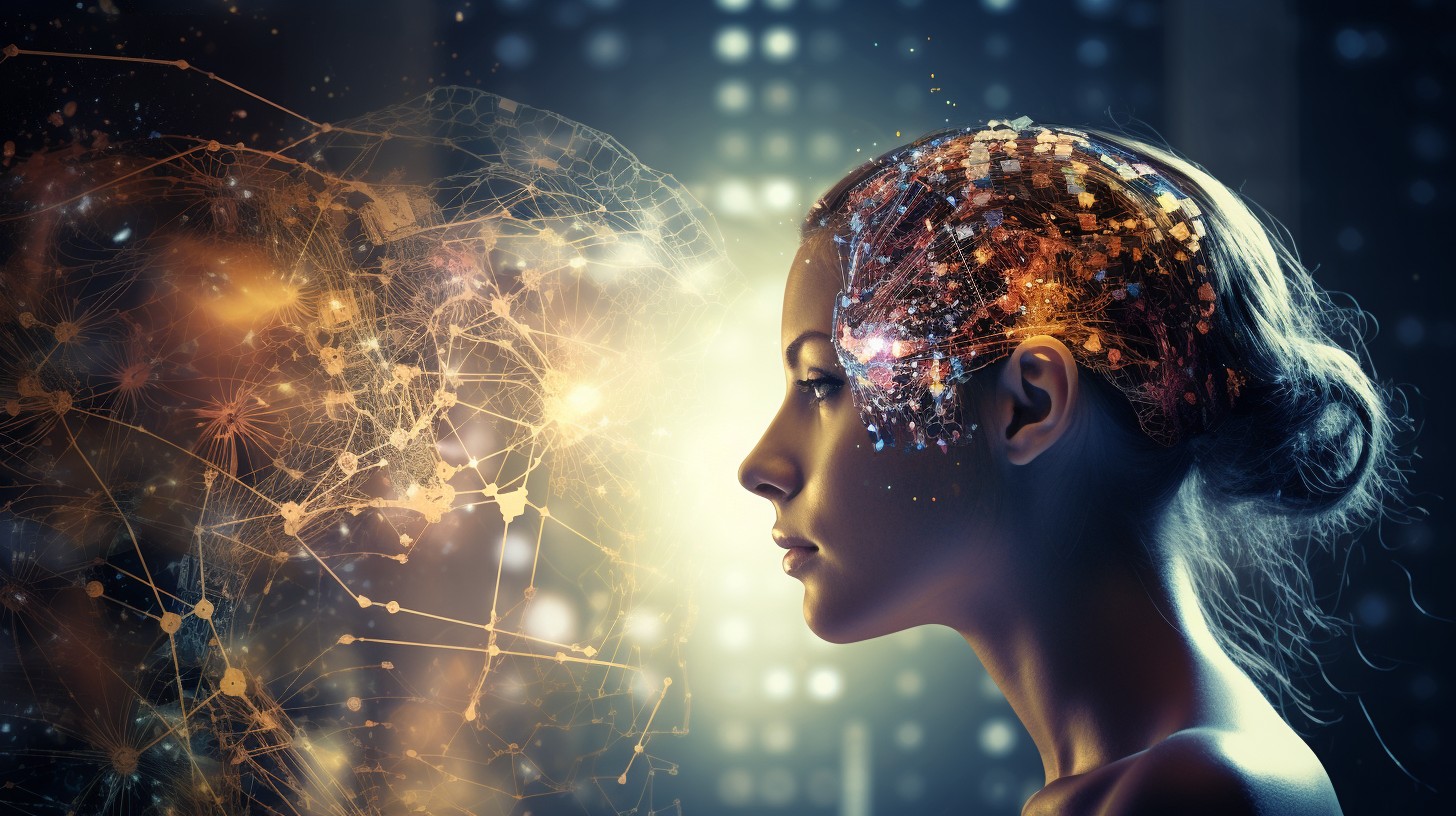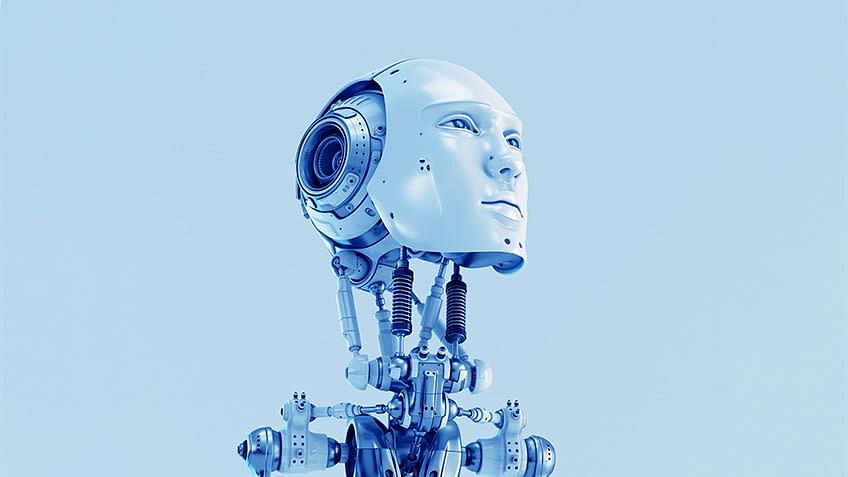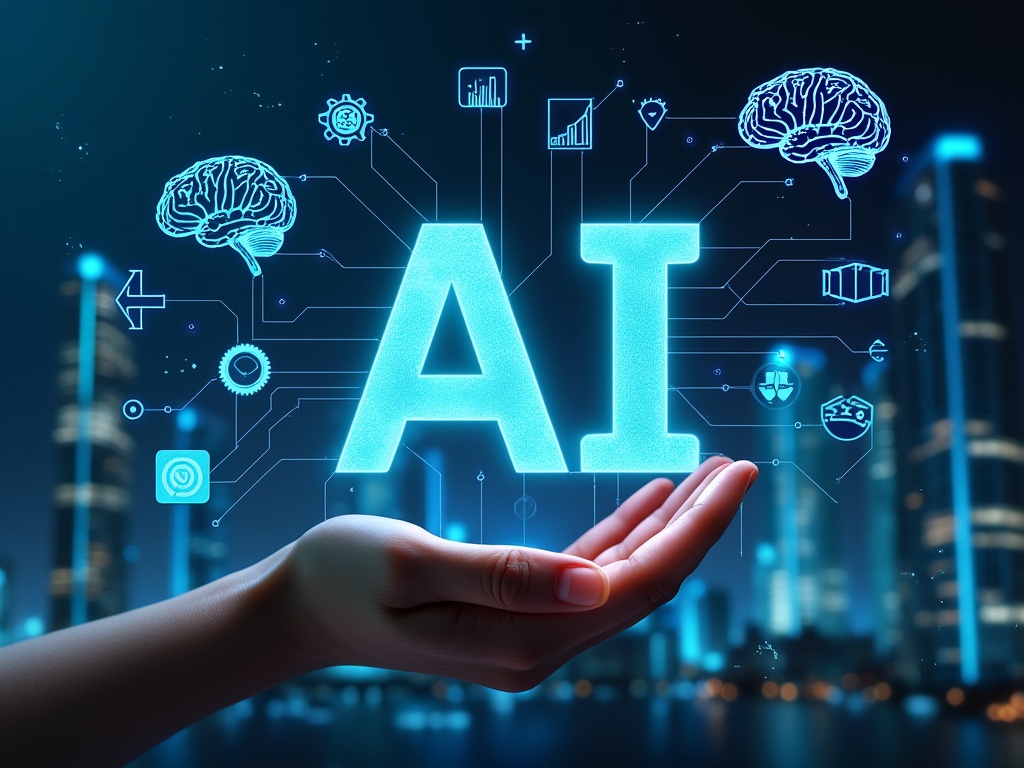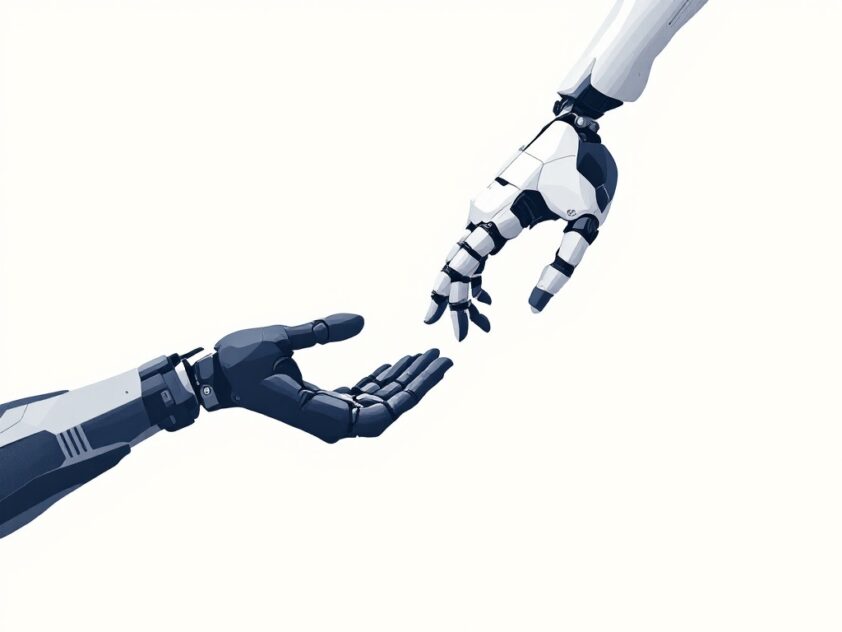Imagine a world where artificial intelligence seamlessly enhances human capabilities, working in perfect harmony to solve complex problems. While this vision is compelling, the reality of human-AI collaboration presents nuanced challenges. As research shows, even experienced practitioners struggle with fundamental barriers when working with AI systems.
The intersection of human cognition and artificial intelligence creates a fascinating yet complex dynamic. From healthcare professionals using AI for diagnosis to designers collaborating with generative AI tools, these partnerships often face three critical obstacles: reliable data management, intuitive user interface design, and system dependability. Each of these challenges has significant implications for the future of work.
These obstacles are particularly intriguing due to their interconnected nature. A brilliantly designed AI system becomes useless without proper data management, while even the most robust data infrastructure can fail if users cannot effectively interact with the system through its interface. The reliability question looms large over both – how can we trust AI systems to consistently deliver accurate, unbiased results?
Close collaborations with AI/ML developers and data scientists could address some of these challenges, yet such interdisciplinary collaborations are non-routine and hard to realize.
ACM Digital Library Research
As we explore these challenges, we’ll uncover not just the obstacles themselves, but practical approaches to overcome them. Whether you’re a developer building AI systems or a professional learning to work alongside them, understanding these core challenges is crucial for successful human-AI collaboration. The solutions we discover may reshape how we think about the relationship between human intelligence and its artificial counterpart.
Cognitive Challenges in Human-AI Collaboration

Human and artificial intelligence collaboration faces significant cognitive hurdles. At the core of this challenge is what researchers call “metaknowledge” – the ability to accurately assess what we know and don’t know.
Metaknowledge acts like a mental GPS, guiding us through our capabilities. When this system is imprecise, it becomes difficult to decide when to trust our judgment versus deferring to AI. Research has shown that a lack of metaknowledge limits effective human-AI collaboration.
This challenge is evident in real-world scenarios. For example, a radiologist working with AI to detect cancer must decide whether to trust their interpretation or the AI’s analysis. Without strong metaknowledge, they might override the AI incorrectly or follow incorrect AI recommendations when their judgment was right.
Humans often overestimate their abilities in simple tasks and lack confidence where they excel. A doctor might second-guess a correct diagnosis because an AI disagrees or stick to an incorrect assessment despite valid AI input due to imperfect metaknowledge.
Lacking metaknowledge is an unconscious trait that fundamentally limits how well human decision-makers can collaborate with AI and other algorithms.
Fügener et al., Information Systems Research
Fortunately, metaknowledge can be improved through structured feedback and training. By helping humans understand their strengths and limitations, organizations can enhance human-AI collaboration. This might involve regular performance assessments, detailed feedback sessions, and carefully designed training programs that help individuals calibrate their self-awareness.
Integration Issues with Existing IT Infrastructures
Integrating artificial intelligence with legacy IT systems often resembles renovating an old house. While the foundation may be solid, significant work is needed to accommodate modern capabilities. Organizations face mounting pressure to integrate AI solutions, yet many struggle with systems that weren’t designed for such advanced technologies.
One of the most pressing challenges stems from the fundamental incompatibility between legacy architectures and AI requirements. Many existing systems operate on outdated databases and non-standard data formats, making it difficult to extract and process the information AI models need to function effectively. According to Arion Research, legacy systems often carry significant technical debt while remaining essential to daily operations, particularly in industries like financial services, healthcare, and manufacturing.
Infrastructure scalability presents another significant hurdle. Legacy systems typically lack the computing power and storage capabilities required to support AI processing, especially for real-time analysis and decision-making. When organizations attempt to integrate AI without proper infrastructure assessment, they often encounter performance bottlenecks that can ripple throughout their operations.
| Aspect | Legacy Systems | Modern IT Infrastructures |
|---|---|---|
| Functionality | Often limited and outdated | Advanced and continually updated |
| Cost | High maintenance costs | Lower long-term costs due to efficiency |
| Scalability | Limited scalability | Highly scalable |
| Security | Outdated security measures | Advanced, multi-layered security |
| Integration | Challenging due to incompatibility | Designed for easy integration |
| Performance | Lower performance | High performance |
Data quality and standardization are ongoing challenges in the integration process. For AI systems to provide accurate insights, they require clean and well-structured data. Unfortunately, many legacy systems contain siloed, inconsistent, or outdated information that needs extensive cleaning and standardization to be useful for AI applications.
Security concerns also play a significant role when connecting AI to existing infrastructure. Legacy systems often lack modern security protocols, which creates vulnerabilities when they are integrated with AI platforms. Organizations must navigate these risks carefully while ensuring compliance with current data protection regulations and privacy standards.
The true potential of AI for any organization lies in effectively utilizing its own data. However, without proper integration strategies, this potential remains largely untapped. According to Michael Fauscette, Chief Analyst at Arion Research, organizations need a comprehensive integration strategy that includes thorough system assessments, data modernization initiatives, and the implementation of appropriate security measures.
Success often comes from a phased approach, allowing teams to test and validate AI integrations before full-scale deployment. Moving forward, organizations must strike a balance between innovation and practicality. While complete system overhauls may not be feasible, strategic integration methods such as API wrappers and microservices architectures can help bridge the gap between legacy systems and AI capabilities. This enables gradual modernization without disrupting critical operations.
Addressing Data Management Challenges
Data management is crucial for successful human-AI collaboration, yet many organizations struggle with fundamental challenges that limit AI effectiveness. The complexity of enterprise data ecosystems demands sophisticated solutions that bridge the gap between human oversight and AI capabilities.
Data silos are one of the most pressing obstacles in human-AI collaboration. When critical information remains trapped in isolated systems or departments, AI models receive incomplete datasets, leading to skewed results. This fragmentation prevents AI systems from accessing comprehensive data needed for accurate analysis and decision-making.
Consistency is another significant hurdle. According to data management experts, organizations often struggle with maintaining standardized data formats and quality across different sources. Without consistent data structures and validation processes, AI systems may produce unreliable outputs, undermining their utility in business operations.
Data accessibility presents unique challenges in human-AI collaboration. While AI requires extensive, high-quality data for training and operation, many enterprises face restrictions in data access due to privacy concerns, regulatory compliance requirements, or technical limitations. This accessibility gap can severely impact an AI system’s learning capabilities and overall performance.
| Challenge | Description | Solution |
|---|---|---|
| Sheer Volume of Data | Organizations face difficulties in obtaining, maintaining, and generating value from the vast amounts of data created daily. | Implement effective data categorization and processing methods, and use appropriate tools and technology. |
| Multiple Data Storages | Enterprises often have data spread across multiple siloed systems, making it hard to consolidate and evaluate. | Create a single source of truth by removing data silos and linking data from various sources. |
| Data Quality | Maintaining high-quality and accurate data is challenging, leading to potential financial losses. | Implement data quality monitoring standards and regular validation processes. |
| Data Integration | Integrating data from various sources is difficult due to different formats and structures. | Use ETL tools and standardized APIs to streamline data integration. |
| Data Security | Protecting sensitive data from unauthorized access and breaches is a major concern. | Implement robust security measures, including encryption and access controls. |
Organizations must implement robust data governance frameworks that balance automation with human oversight. This includes establishing clear data quality standards, implementing regular validation processes, and ensuring proper documentation of data lineage. Such measures help maintain data integrity while facilitating seamless collaboration between human operators and AI systems.
The trustworthiness of business partner data depends on human oversight—on the ethical sourcing of information, adherence to industry standards, and cross-checking against verified sources.
The Future of Trusted Data Management
To overcome these challenges, organizations should invest in unified data platforms that break down silos while maintaining strict security protocols. These platforms should support both automated data processing and human-driven quality control measures, creating a balanced ecosystem where AI and human expertise complement each other effectively.
Ensuring Fairness and Reducing Bias
Bias in artificial intelligence systems remains one of the most critical challenges facing the industry today. AI models can perpetuate and amplify existing societal inequities when they make decisions based on skewed or incomplete data. These systems often reflect the historical biases present in their training data.
For example, recruitment AI systems have shown bias against female candidates because they were trained primarily on historical hiring data dominated by male hires. As research has demonstrated, ensuring fairness requires carefully evaluating training datasets for representation across different demographic groups. To build more equitable AI systems, organizations must actively diversify their data sources. This means gathering training data from varied populations and contexts while regularly auditing datasets to identify potential biases.
Facial recognition systems, for instance, have improved their accuracy across different ethnic groups by incorporating more diverse image datasets. Regular evaluation of AI systems is crucial for detecting bias that may emerge during deployment. This includes monitoring key metrics across different population segments and implementing ongoing bias testing protocols. When biases are found, teams need established processes to investigate root causes and apply appropriate mitigation strategies.
Addressing AI bias requires a holistic approach that considers the broader societal context. We must examine how historical inequities manifest in data and actively work to prevent AI systems from perpetuating discriminatory patterns. This may involve consulting with diverse stakeholders and domain experts during system development. While completely eliminating bias remains challenging, organizations can significantly improve AI fairness through rigorous testing, diverse data collection, and thoughtful system design. The goal is to build AI systems that benefit all users equitably while actively working to identify and mitigate potential sources of unfairness.
Human-AI Communication and Collaboration

A humanoid robot stands against a blue backdrop. – Via simplilearn.com
Human-AI interaction presents unique challenges that set it apart from traditional human-to-human communication. Research has shown that successful collaboration between humans and AI systems requires carefully designed interfaces and communication protocols that bridge the gap between human intuition and machine logic.
Effective human-AI communication relies on understanding how these interactions differ from conventional human conversations. While humans naturally employ context, emotional intelligence, and social cues in their communications, AI systems process information through programmed algorithms and data patterns. This difference requires thoughtful interface design that can translate between these two modes of understanding.
Transparency is critical in building trust between humans and AI systems. Unlike human conversations where we can ask for clarification or read body language, AI systems need to be designed to explain their reasoning and decision-making processes. This transparency helps users understand not just what the AI is doing, but why it’s making specific choices or recommendations.
Language processing capabilities have evolved significantly, enabling more natural interactions between humans and AI. However, these interactions still face hurdles when dealing with nuanced communication elements like sarcasm, context-dependent meanings, and cultural references. Successful collaboration requires interfaces that can handle these complexities while maintaining clear and unambiguous communication channels.
Improving human-AI collaboration involves developing adaptive interfaces that can learn from user interactions and adjust their communication style accordingly. This includes recognizing user preferences, understanding common misunderstandings, and providing appropriate levels of detail in explanations based on the user’s expertise and needs.
Leveraging SmythOS for Optimized Collaboration
SmythOS transforms human-AI collaboration through its comprehensive suite of tools designed for building and deploying autonomous AI agents. The platform offers an intuitive visual workflow builder that simplifies the creation of sophisticated AI agents, making advanced automation accessible to both technical and non-technical teams.
One of SmythOS’s standout features is its extensive integration capabilities, with over 300,000 pre-built connections to existing enterprise systems. This robust integration framework enables AI agents to seamlessly interact with various data sources and services, creating a unified ecosystem where human workers and AI assistants can collaborate effectively. As noted by Eric Heydenberk, CTO & Founder at QuotaPath, “SmythOS’s intelligent resource management and seamless integrations are transformative for scalable AI solutions.”
Enterprise security remains paramount in collaborative environments, and SmythOS addresses this through comprehensive security controls. These measures ensure that sensitive data remains protected while enabling productive interaction between human teams and AI agents. The platform’s built-in monitoring system provides real-time oversight of agent activities, allowing organizations to maintain security compliance without sacrificing operational efficiency.
The platform’s visual debugging environment significantly enhances the development and maintenance of collaborative AI systems. This feature enables teams to quickly identify and resolve issues, reducing downtime and ensuring smooth human-AI interactions. By providing clear visibility into agent behavior, SmythOS helps build trust between human workers and their AI counterparts.
Recent implementations have shown that SmythOS’s AI orchestration capabilities allow enterprises to create and manage teams of AI agents that work harmoniously, mimicking human team dynamics while operating at machine speed and scale. This orchestration facilitates more natural collaboration between human workers and AI systems, leading to improved productivity and innovation.
Conclusion and Future Directions

A human hand presenting glowing AI text in a digital scene.
Human-AI collaboration is evolving rapidly, with advanced reasoning, cross-modal generation, and enhanced interactive attributes transforming how humans and AI systems work together. Recent developments in large language models and autonomous agents show that AI systems are becoming more capable of meaningful collaboration with humans.
Current challenges in developing effective human-AI collaboration systems focus on three critical areas. First, while AI’s recognition and prediction capabilities have advanced significantly, robust reasoning abilities are still developing. Second, interactive attributes like context awareness and agility in dynamic scenarios need significant improvement. Third, trust-building mechanisms between humans and AI systems must be carefully considered to ensure productive collaboration.
Future directions for advancing human-AI collaborative systems include the continuous evolution of artificial general intelligence (AGI), which is expected to enhance cross-modal reasoning capabilities and revolutionize AI-assisted complex problem-solving. Additionally, integrating advanced interactive attributes with improved task capabilities could lead to more natural and intuitive human-AI interactions.
Future research should focus on developing sophisticated empathy mechanisms in AI systems, enabling them to better understand and respond to human needs and contexts. This involves incorporating insights from multiple disciplines, including psychology and anthropology, to create more human-centered collaborative systems. The goal is to create AI systems that augment and enhance human capabilities rather than replace them.
The future of human-AI collaboration lies in fostering synergistic partnerships that leverage the unique strengths of both human and artificial intelligence. By addressing current challenges and pursuing innovative solutions, we can create collaborative systems that are more effective and reliable, ultimately benefiting various fields from engineering design to broader societal applications.
